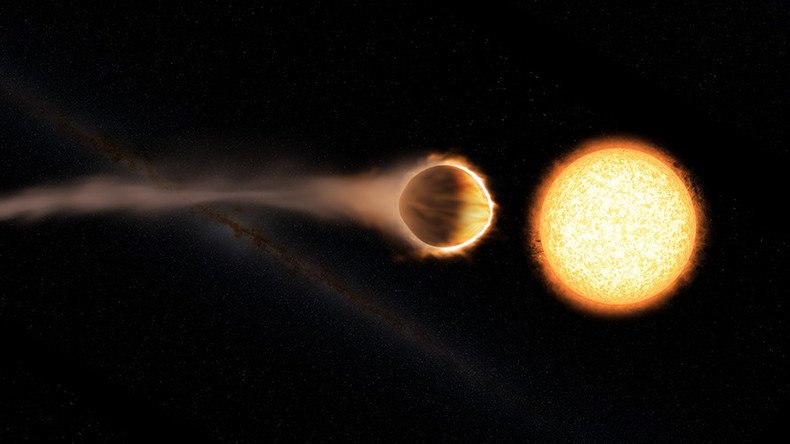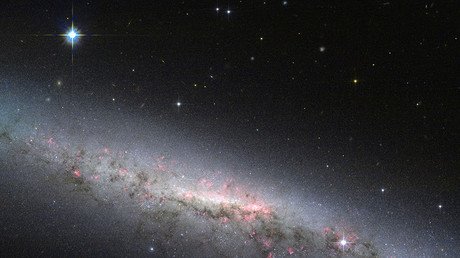‘Glowing’ water in exoplanet’s atmosphere discovered by NASA (VIDEO)

A ‘glowing’ water atmosphere has been detected on an enormous super-hot exoplanet, offering the strongest evidence yet for a stratosphere on a planet outside our solar system.
Researchers using data from NASA’s Hubble telescope observed hot water molecules on WASP-121b, a type of exoplanet called a ‘hot Jupiter.’
This is the first time glowing water molecules were observed on an exoplanet – a planet orbiting a star outside our solar system – and indicates a stratosphere on an exoplanet, researchers said.
A stratosphere is a layer of atmosphere, in which temperature increases with higher altitudes. On Earth, it lies some 50km overhead.
Earth’s stratosphere is particularly important for life on the planet, as it holds the ozone layer — the shield which protects Earth’s surface from most of the sun’s ultraviolet radiation.
"This result is exciting because it shows that a common trait of most of the atmospheres in our solar system – a warm stratosphere – also can be found in exoplanet atmospheres," said Mark Marley, study co-author based at NASA's Ames Research Center.
"We can now compare processes in exoplanet atmospheres with the same processes that happen under different sets of conditions in our own solar system."
However, the study, published in Nature, doesn’t offer much hope that the planet can harbor life.
Given the planet’s incredibly close proximity to its star (it can complete one orbit every 1.3 days), the atmosphere is heated to a sizzling 4,600 degrees Fahrenheit (2,500 Celsius), according to NASA.
“This exoplanet is so close to its star that if it got any closer, the star's gravity would start ripping it apart,” NASA said.
The issue of whether ‘hot Jupiters’ contain stratospheres has been a significant question in exoplanet research for over a decade.
"This super-hot exoplanet is going to be a benchmark for our atmospheric models, and it will be a great observational target moving into the Webb era," said Hannah Wakeford, study co-author.
READ MORE: Bad news for Proxima b: Red dwarf flares jeopardize ‘habitability’ of planet (VIDEO)
Earlier hopes that exoplanet Proxima B may harbor life were all but quashed after researchers found that the habitability of planets orbiting young red dwarf stars is threatened by frequent stellar eruptions, which would likely deplete atmospheric oxygen levels.













